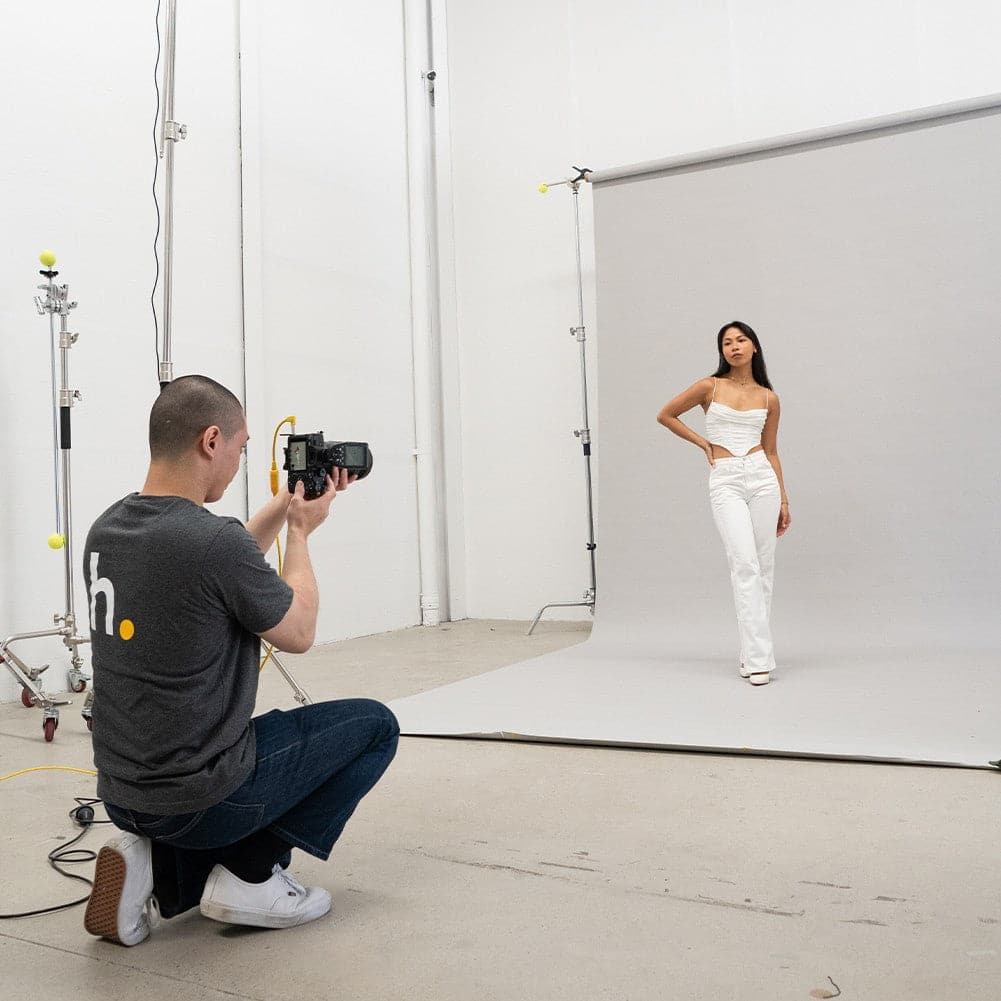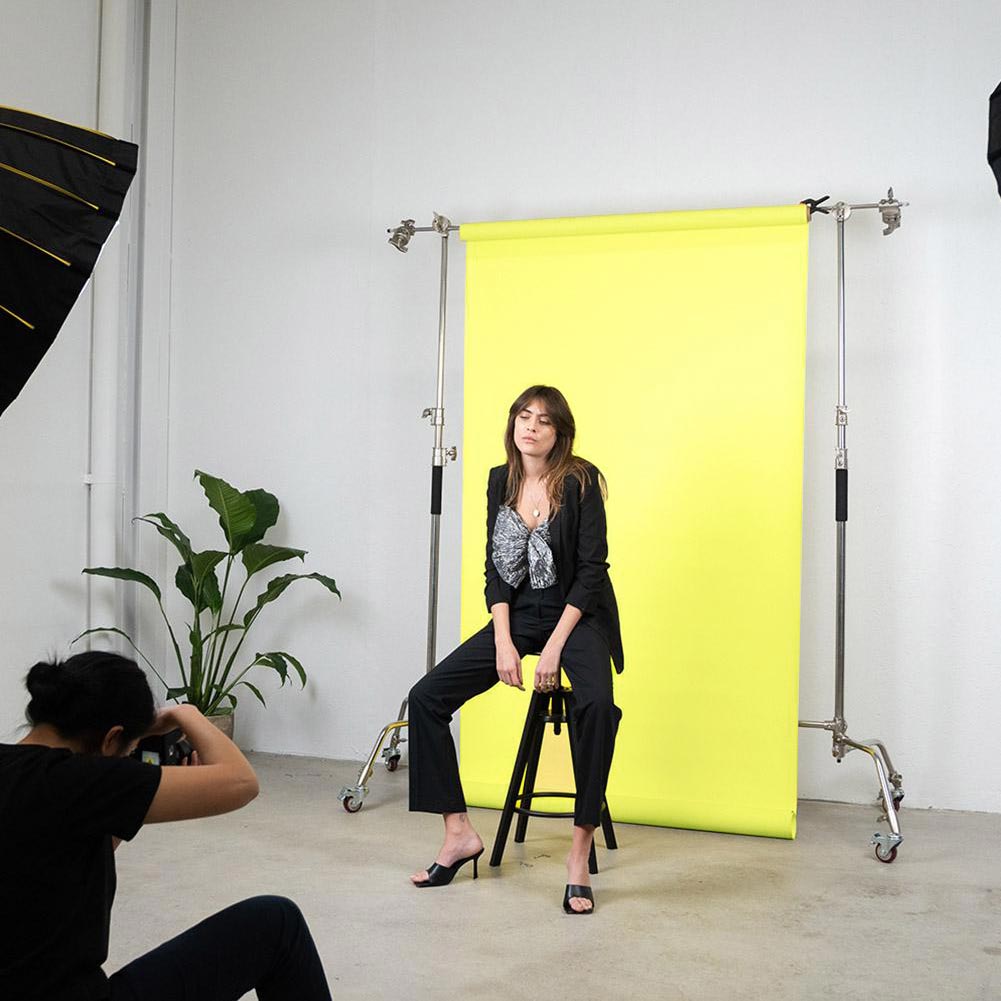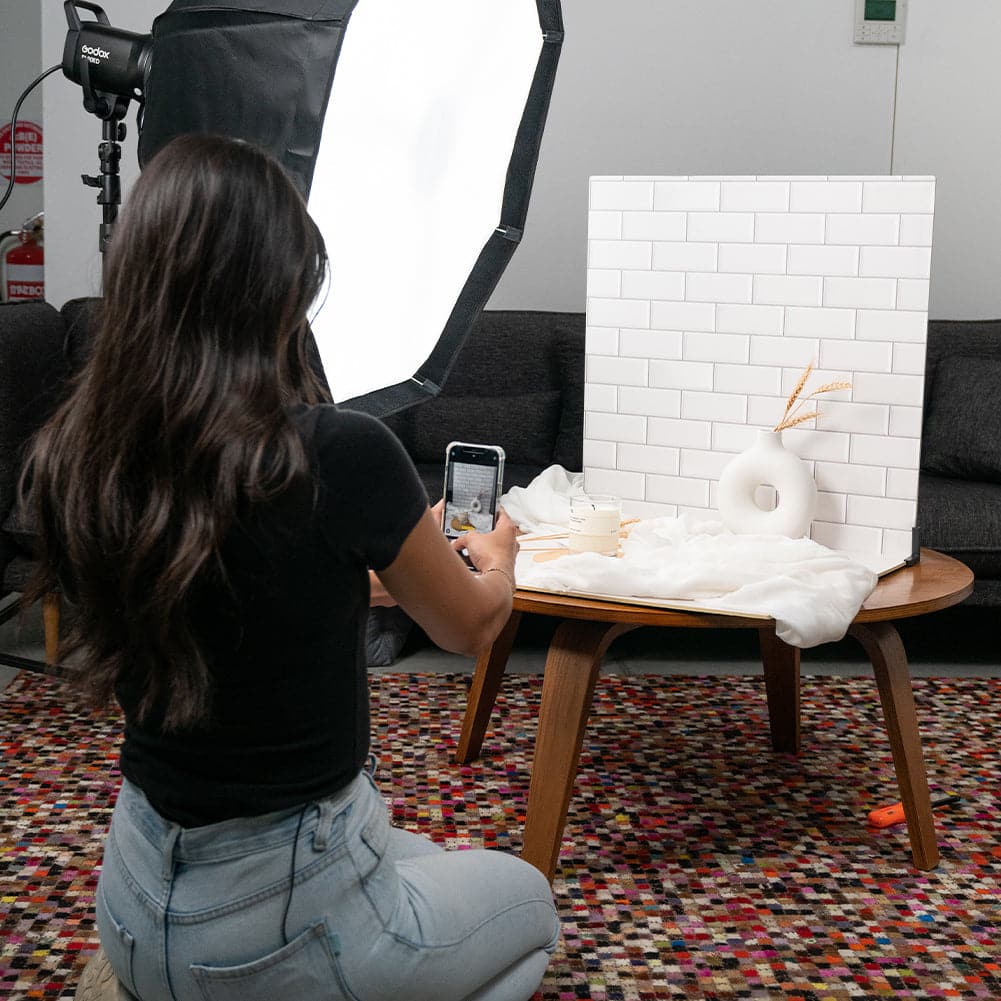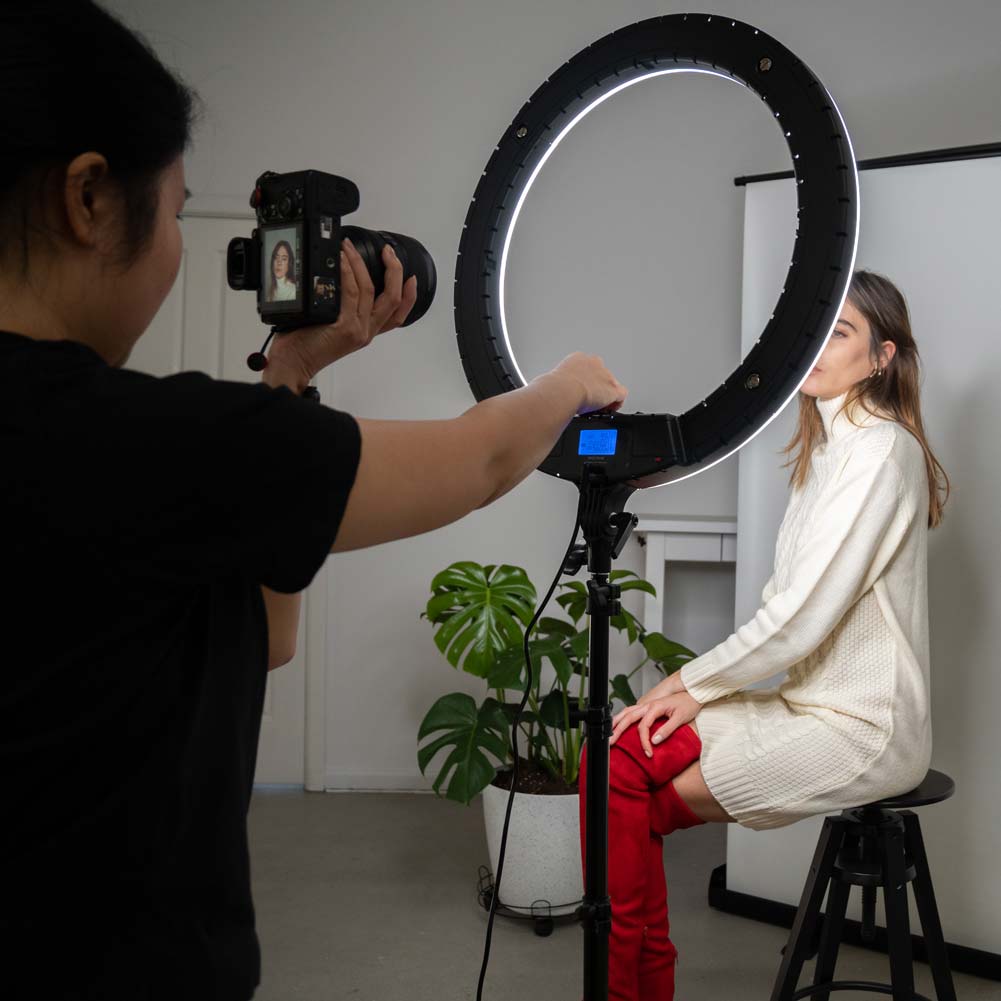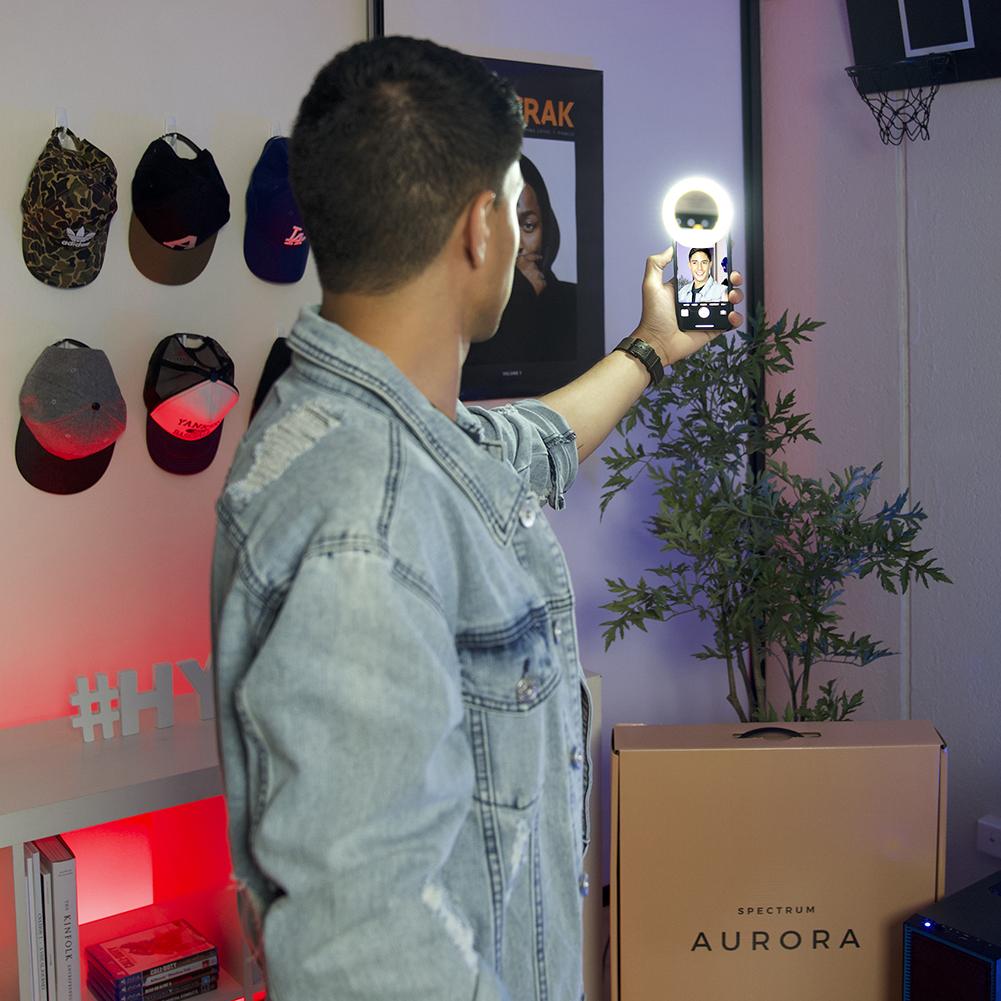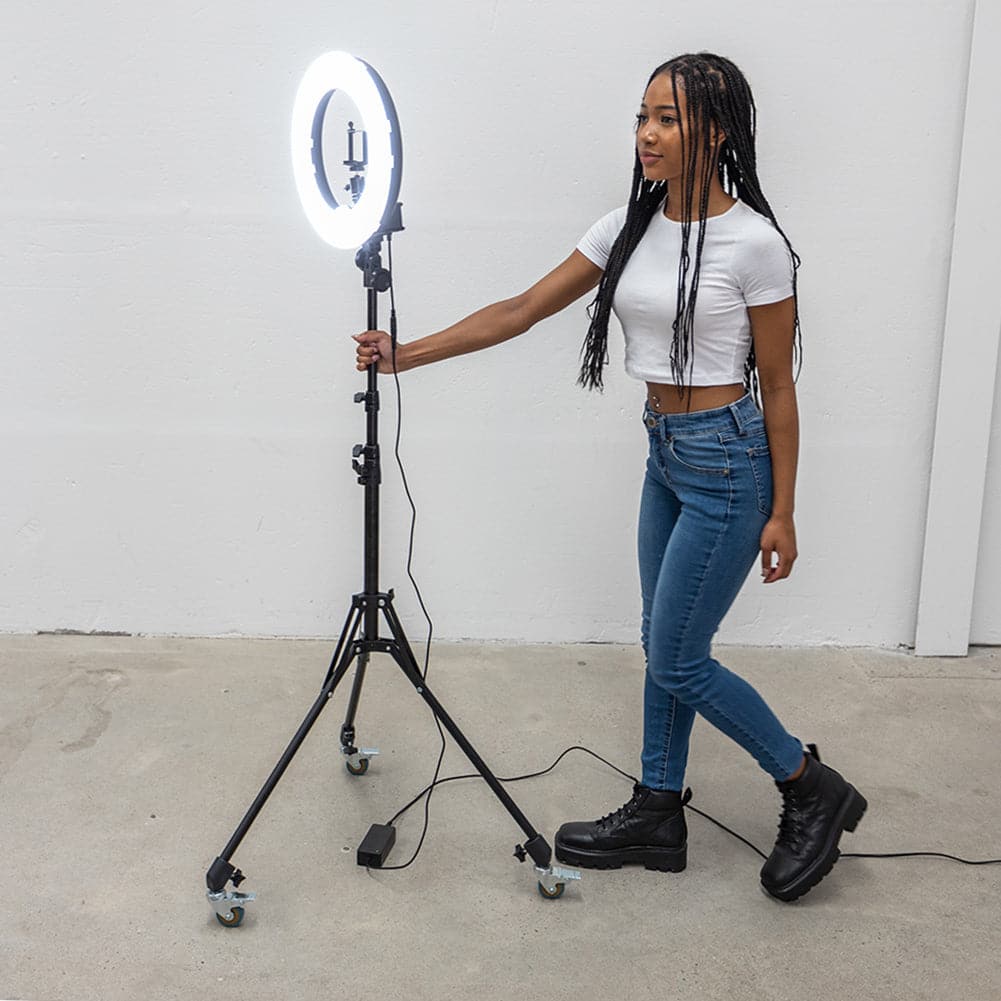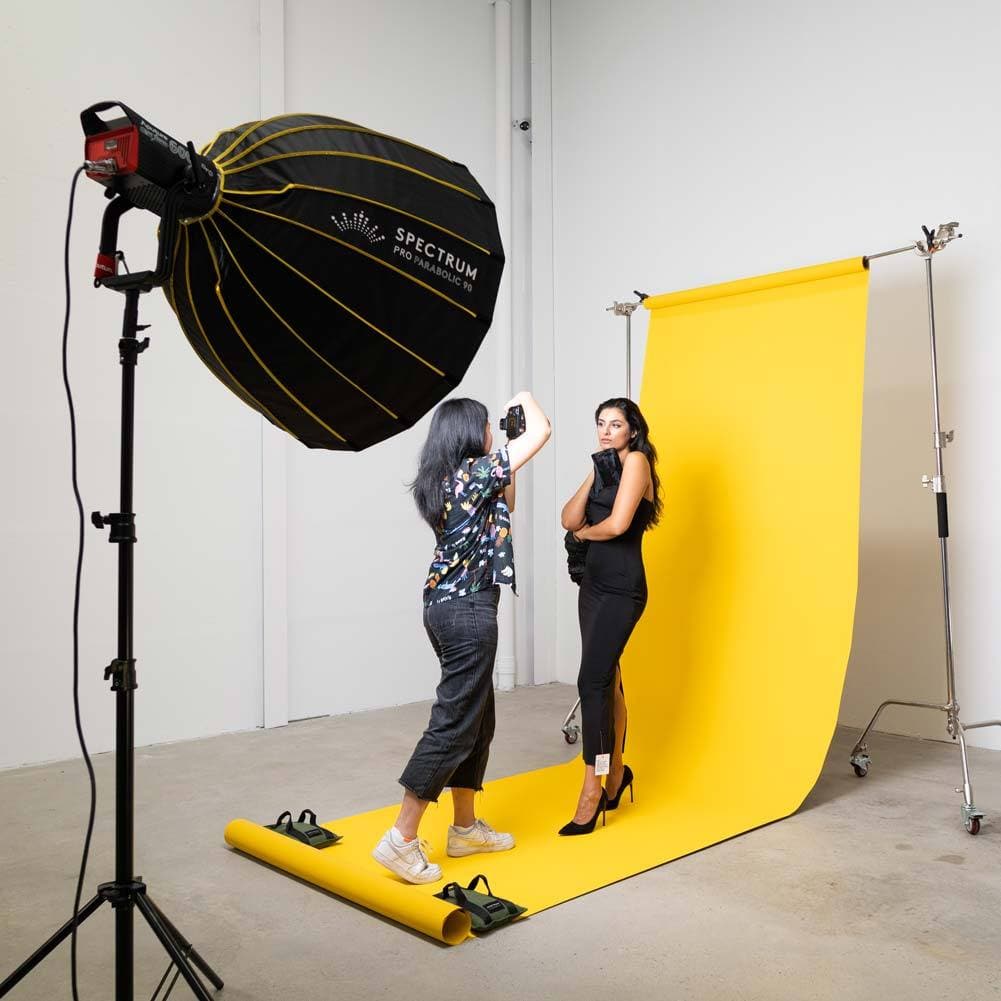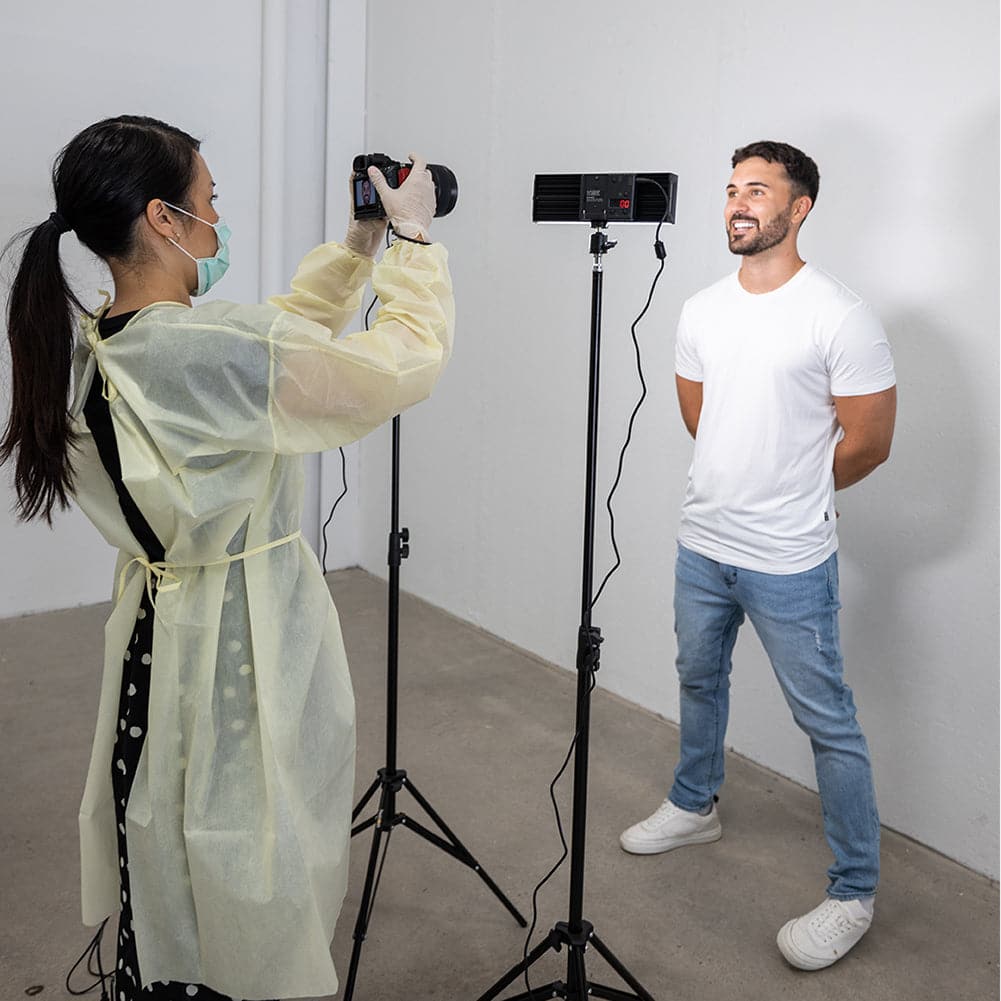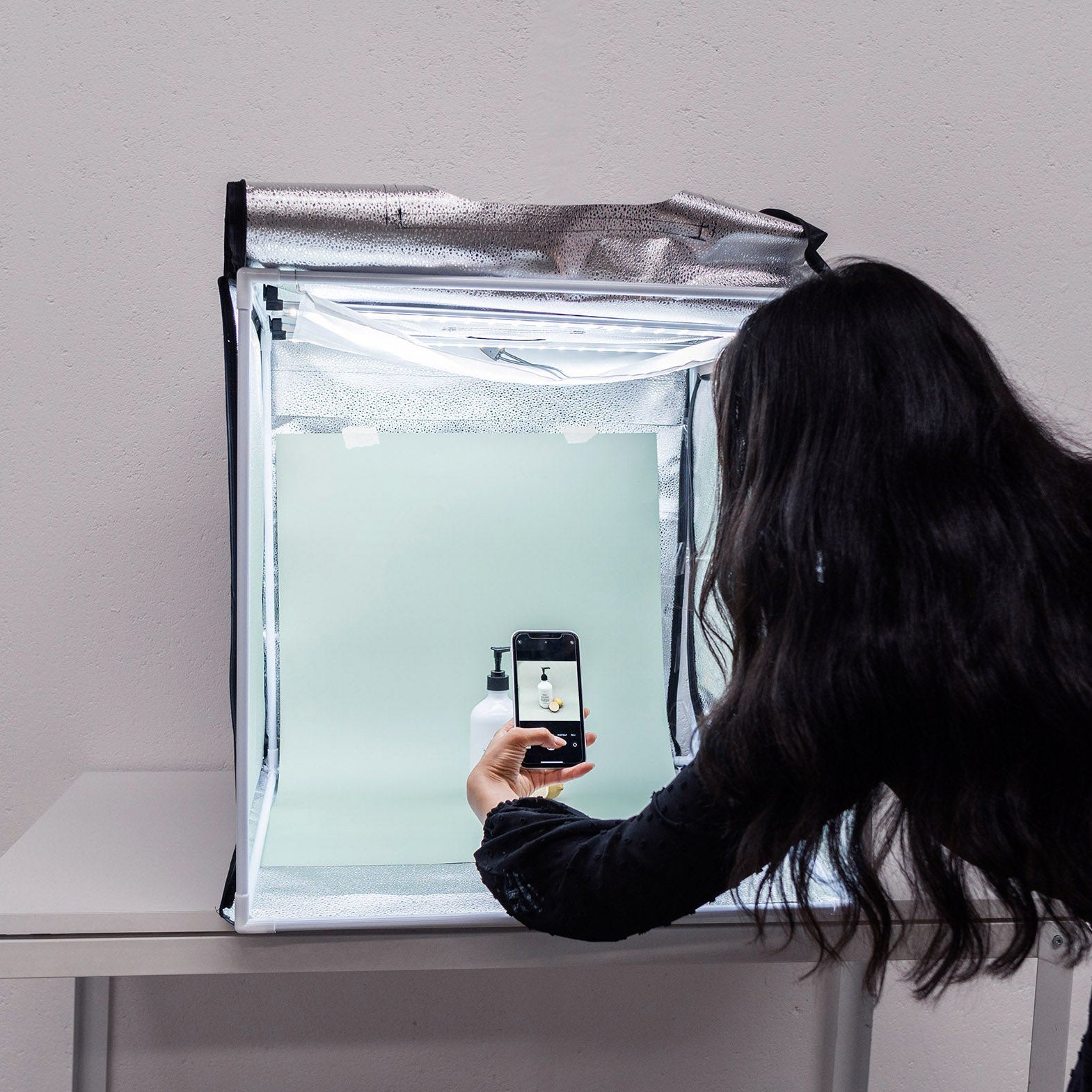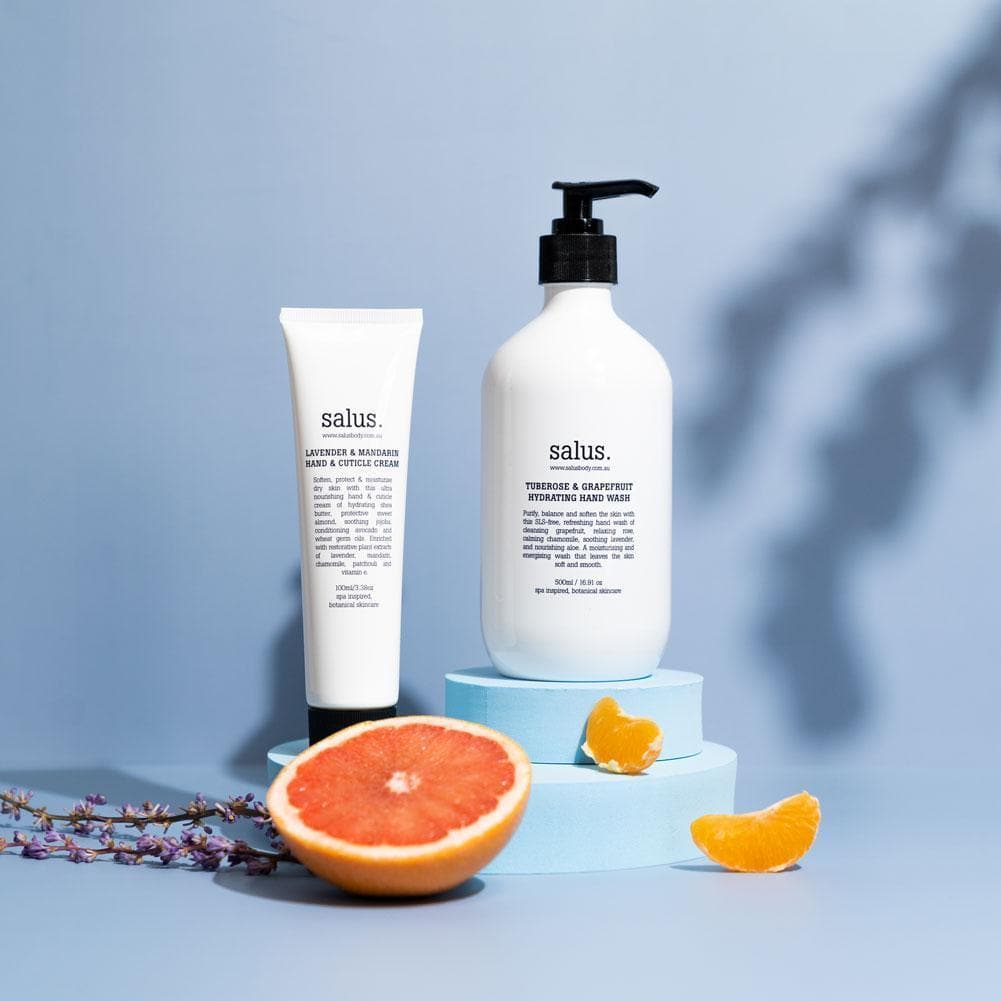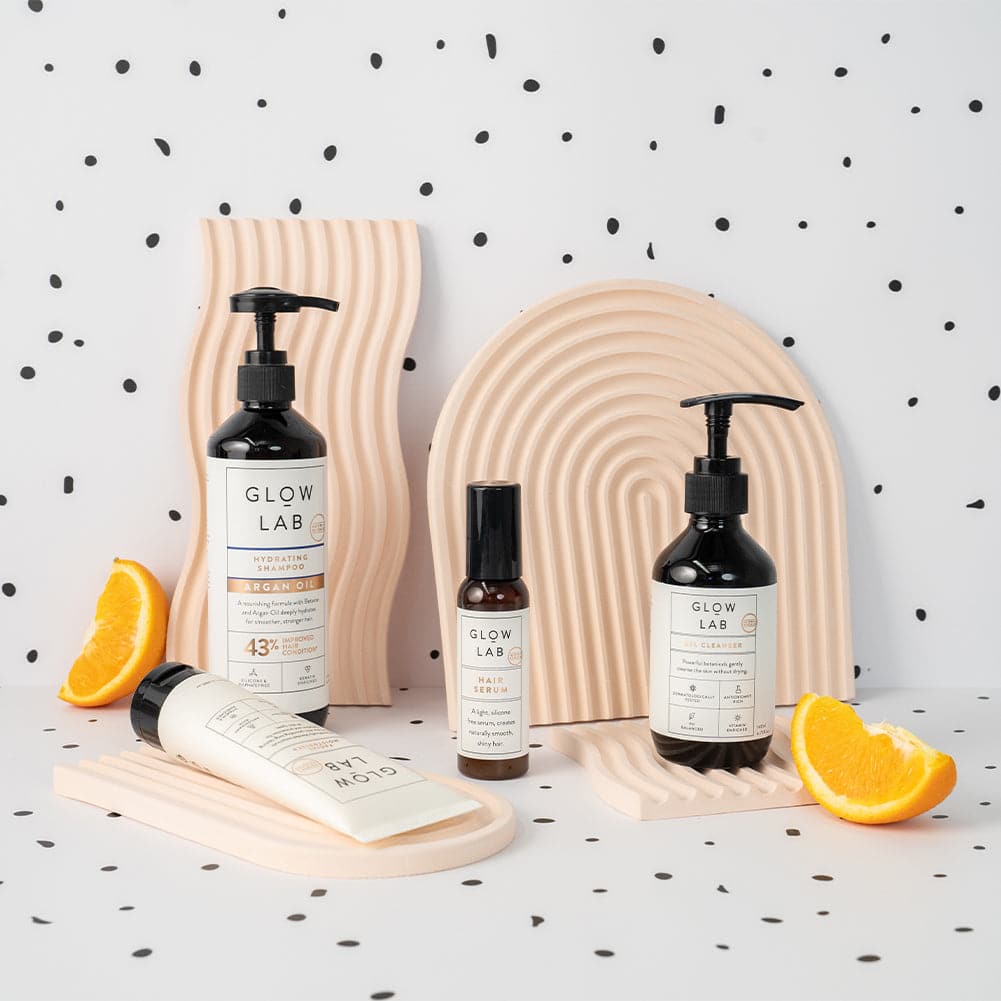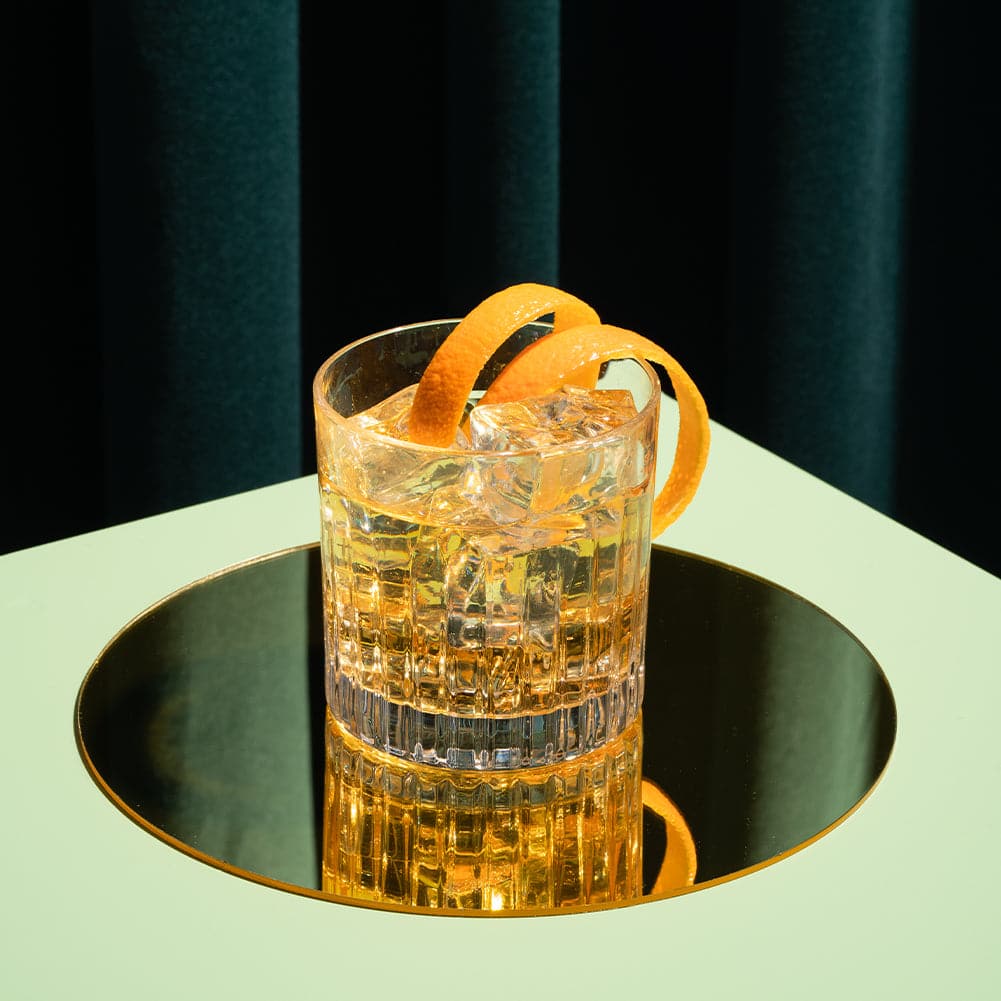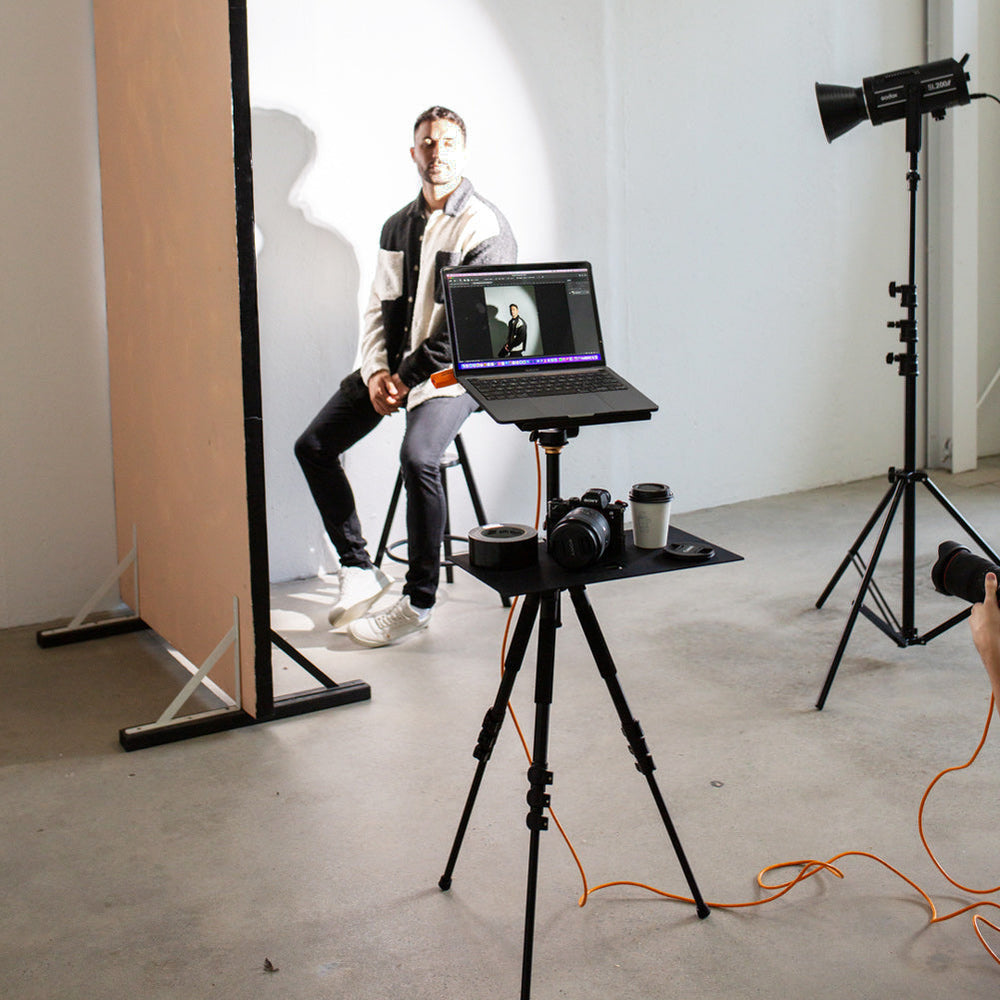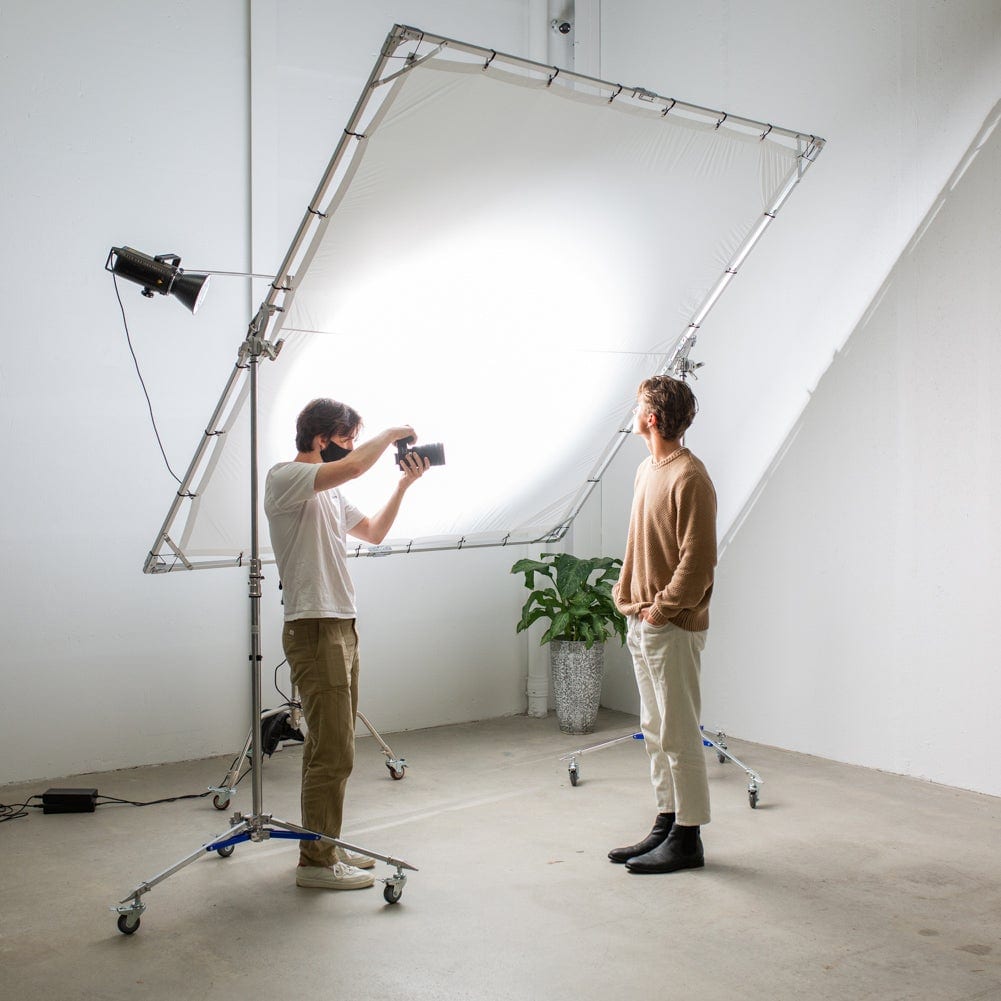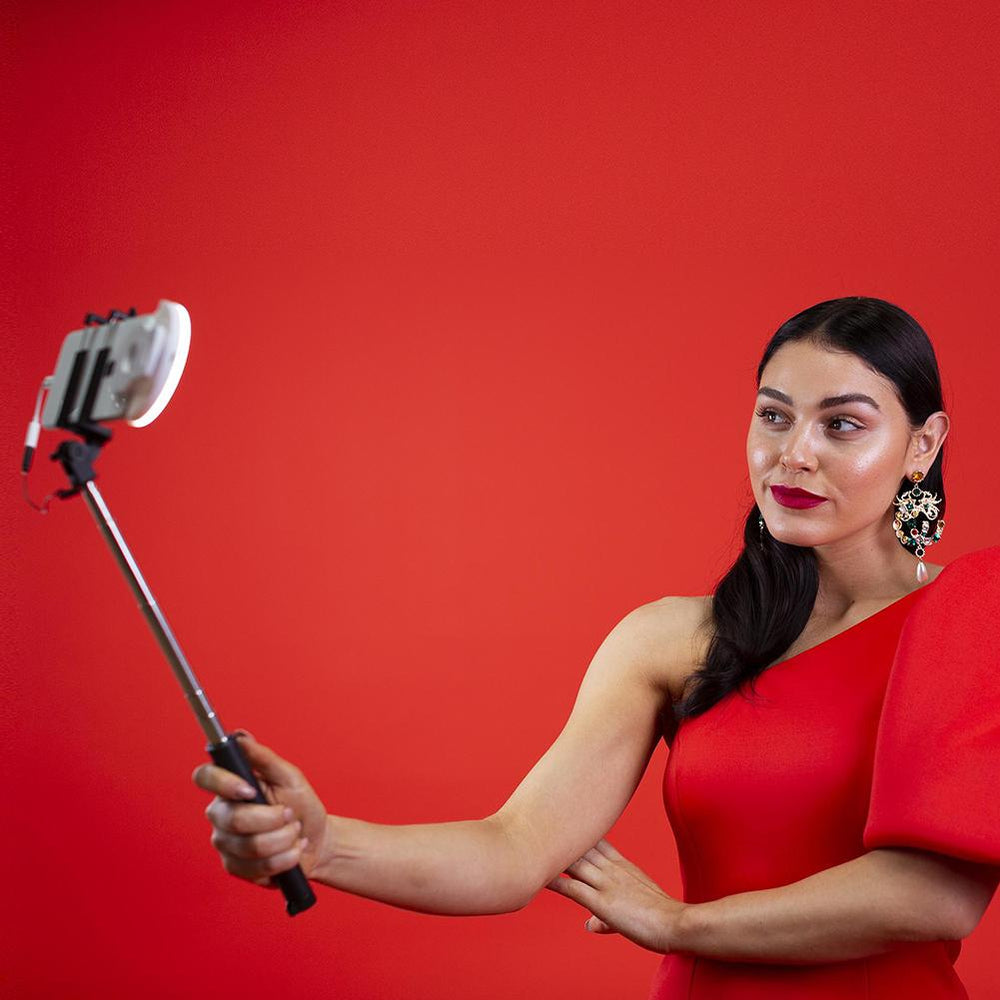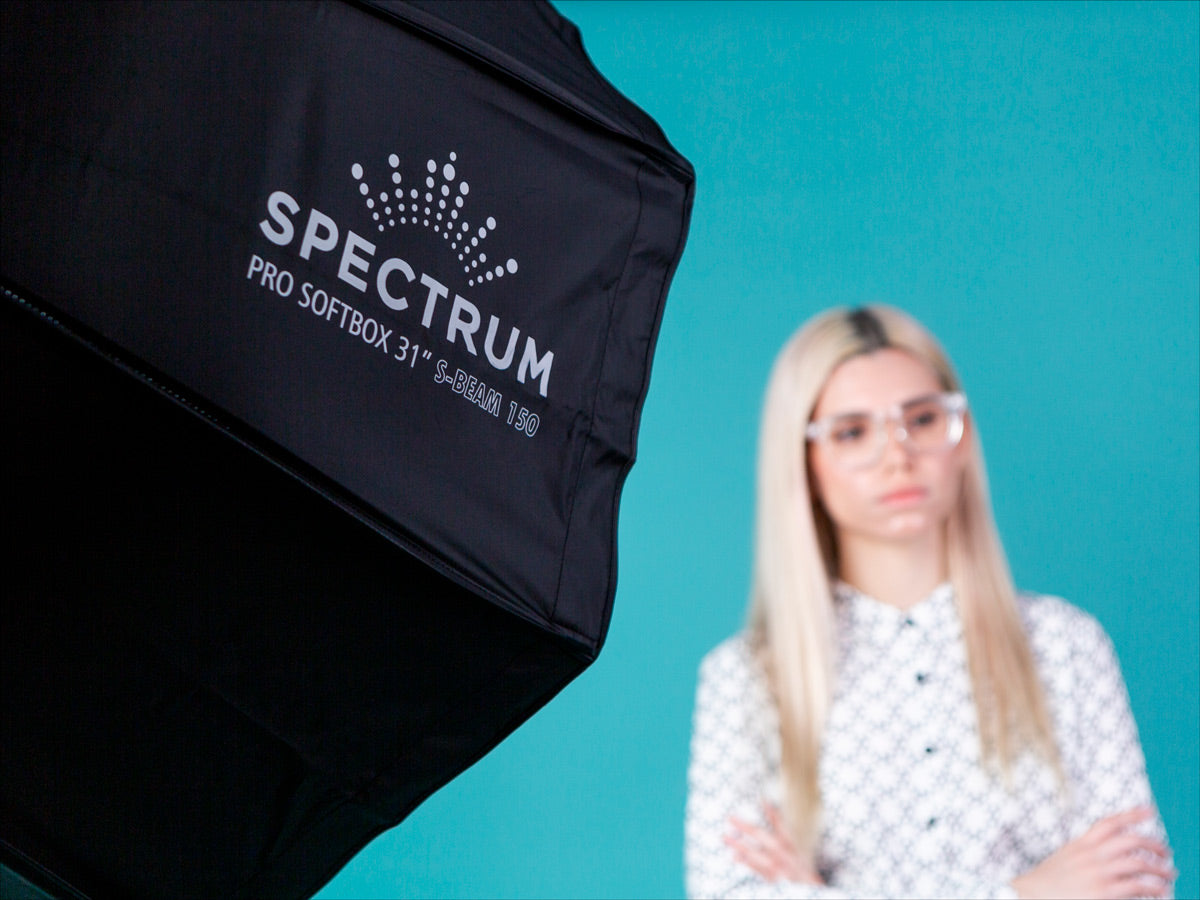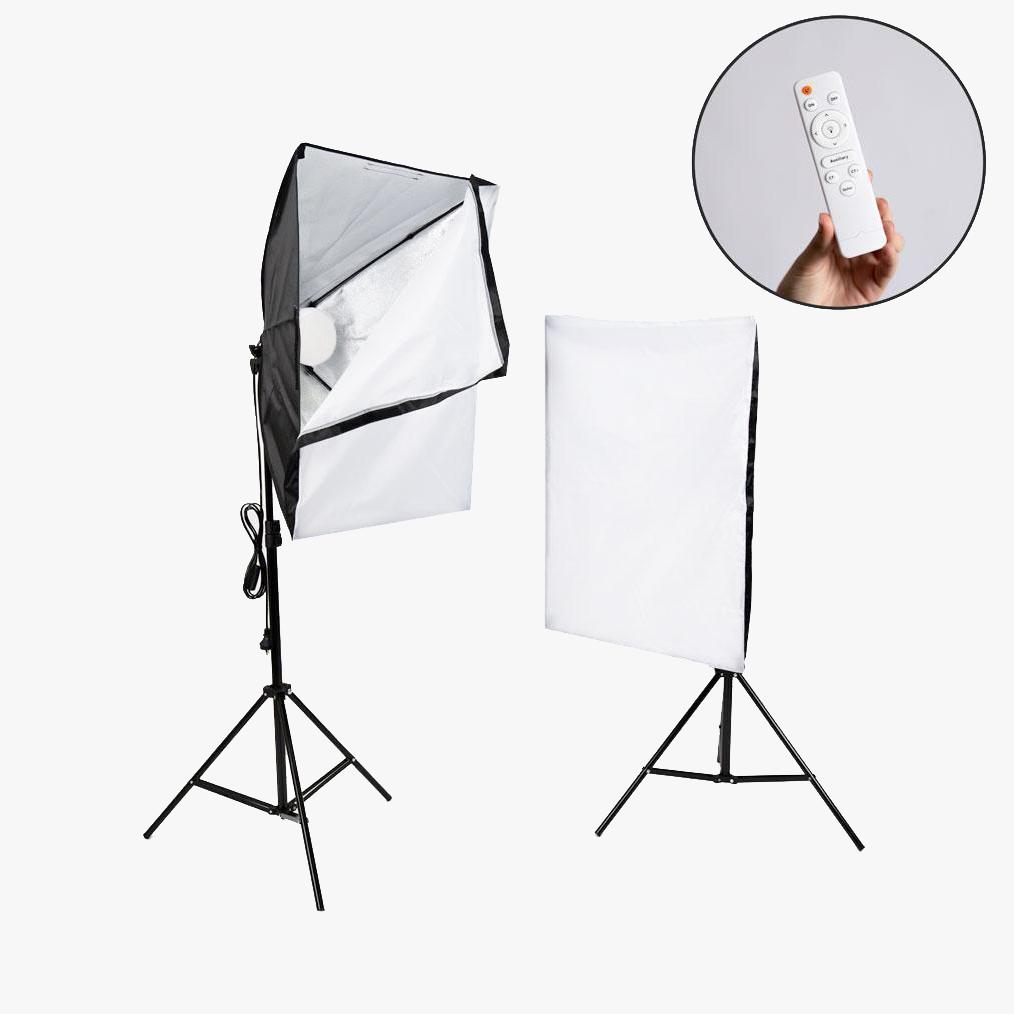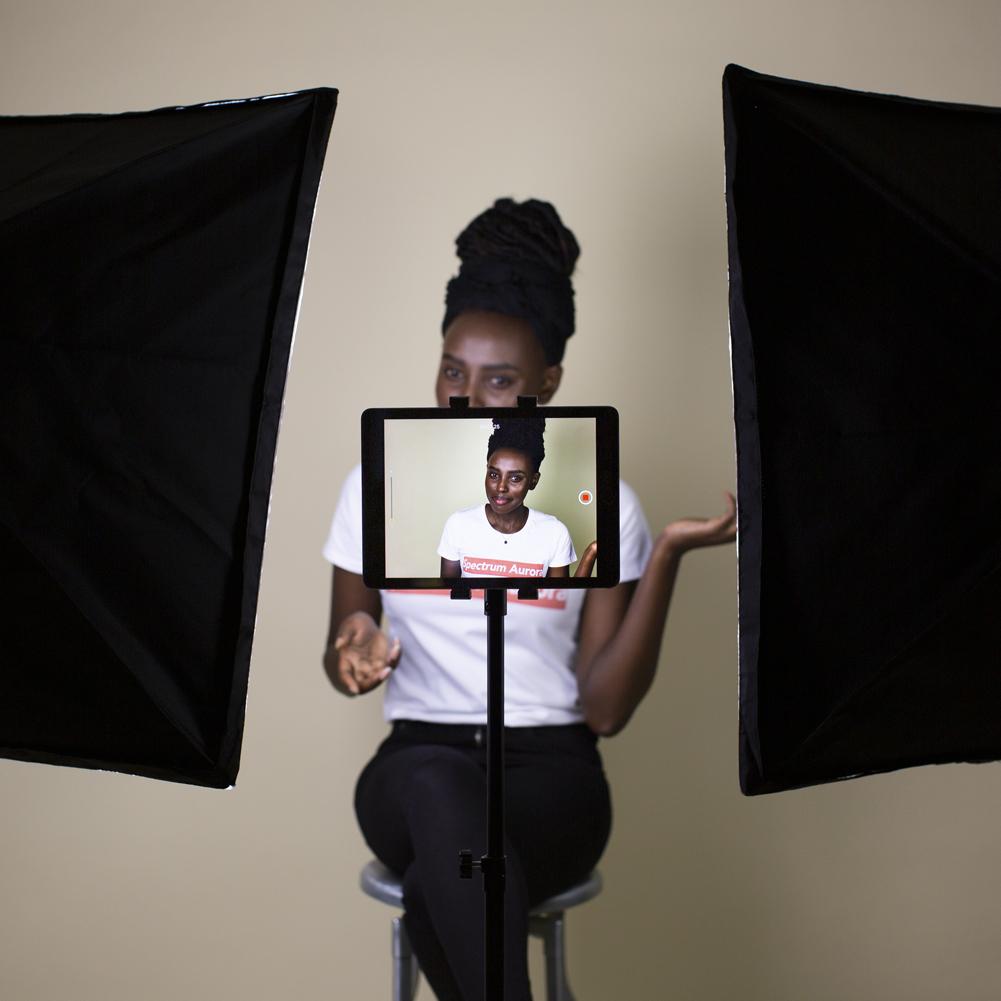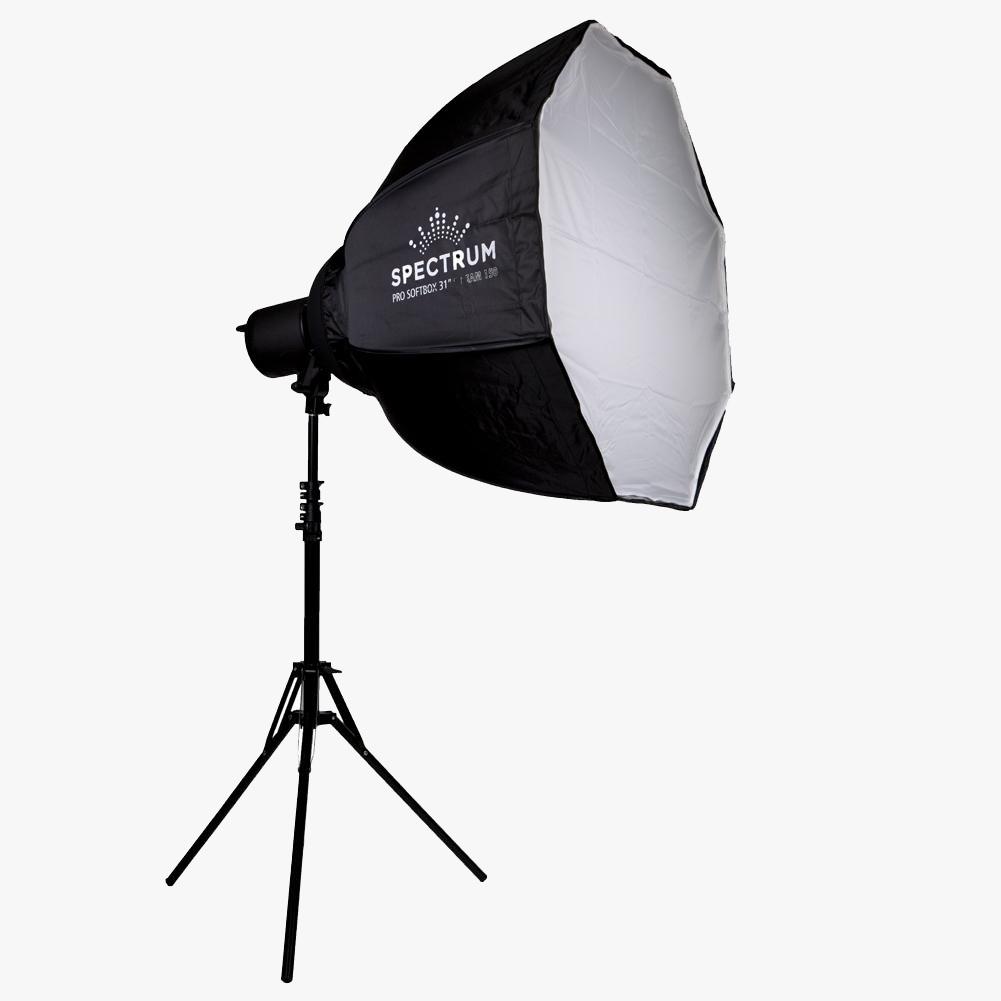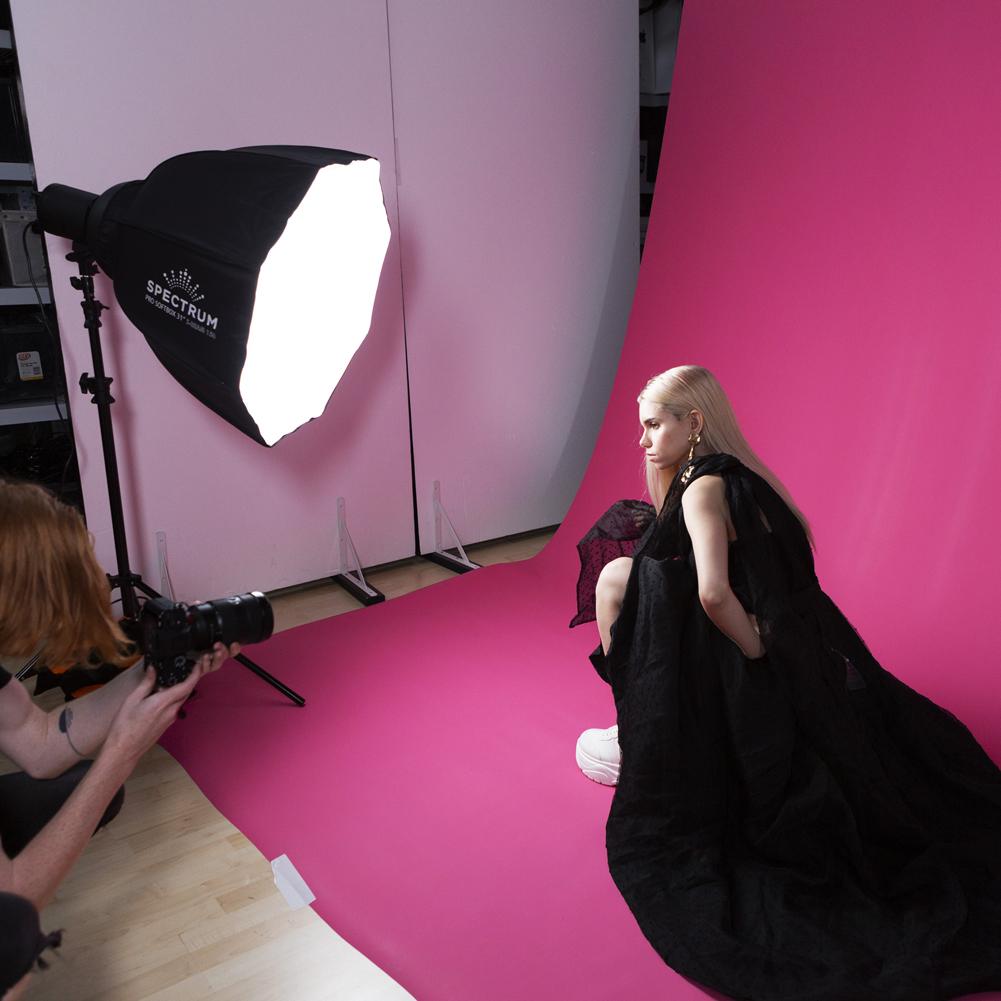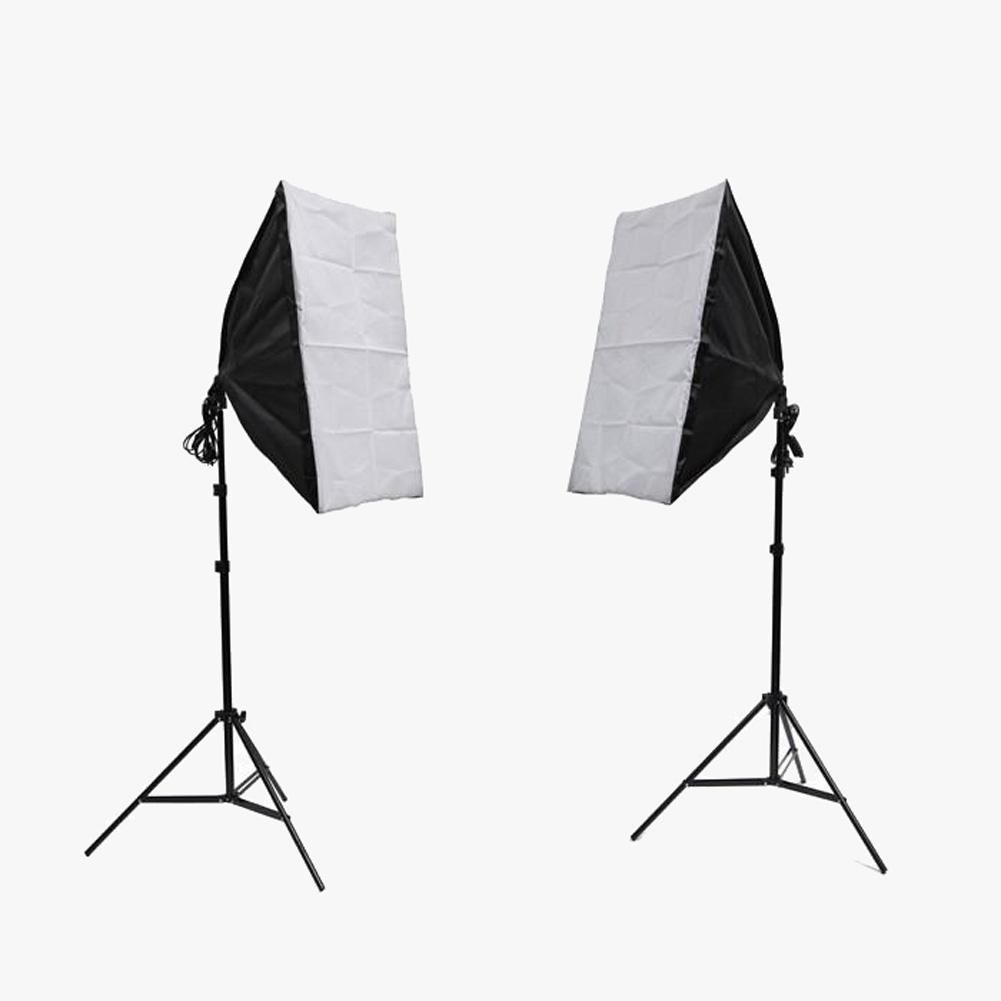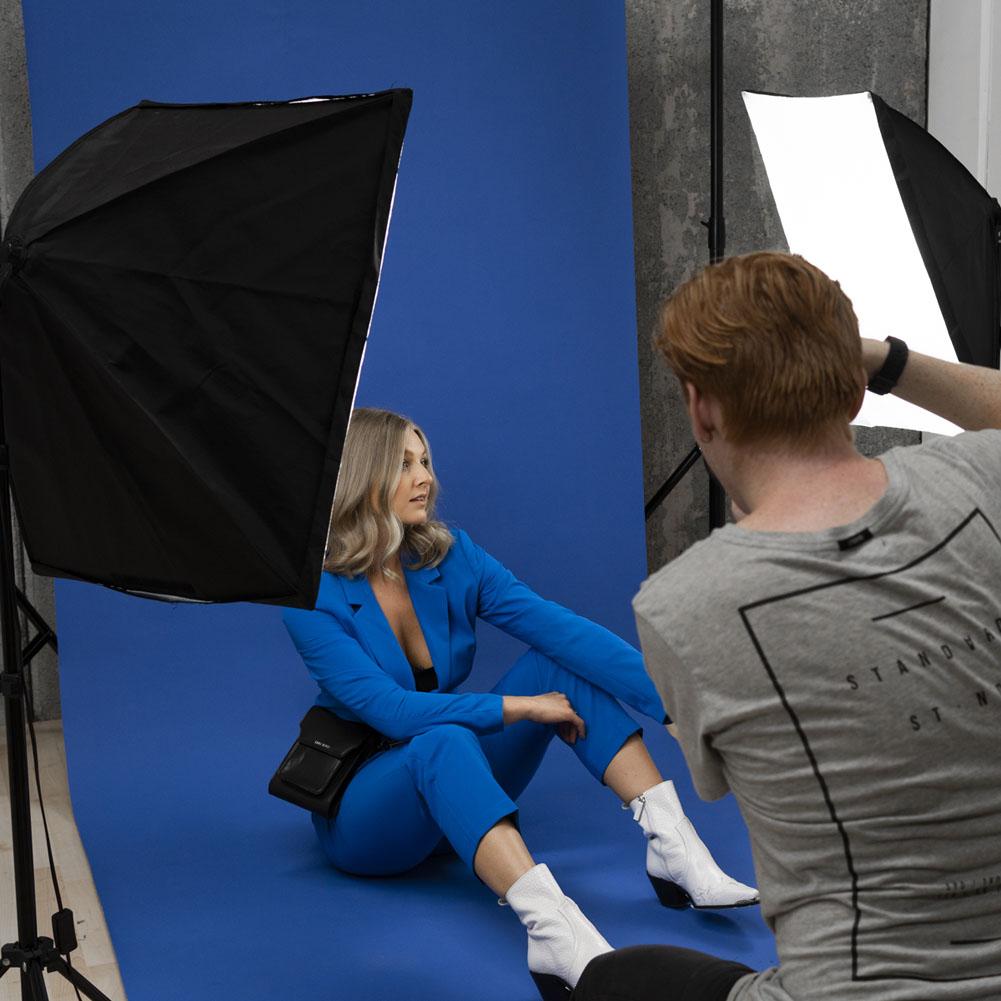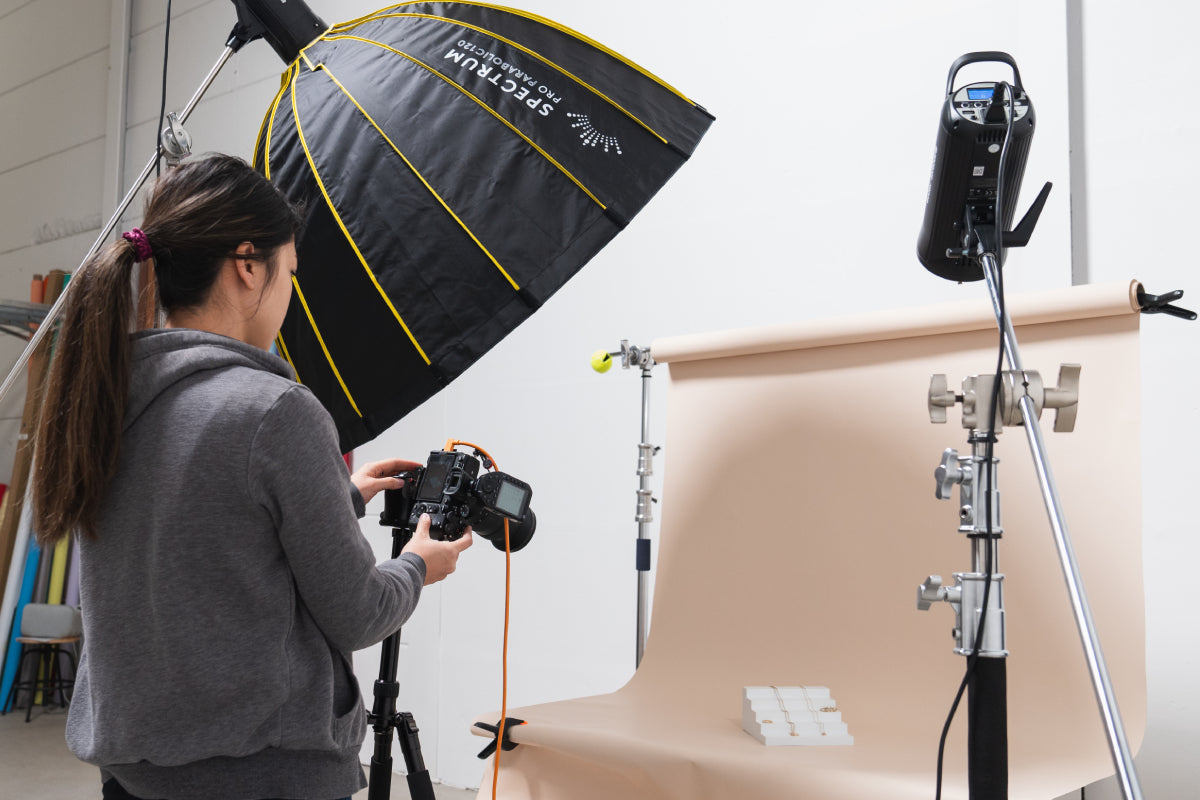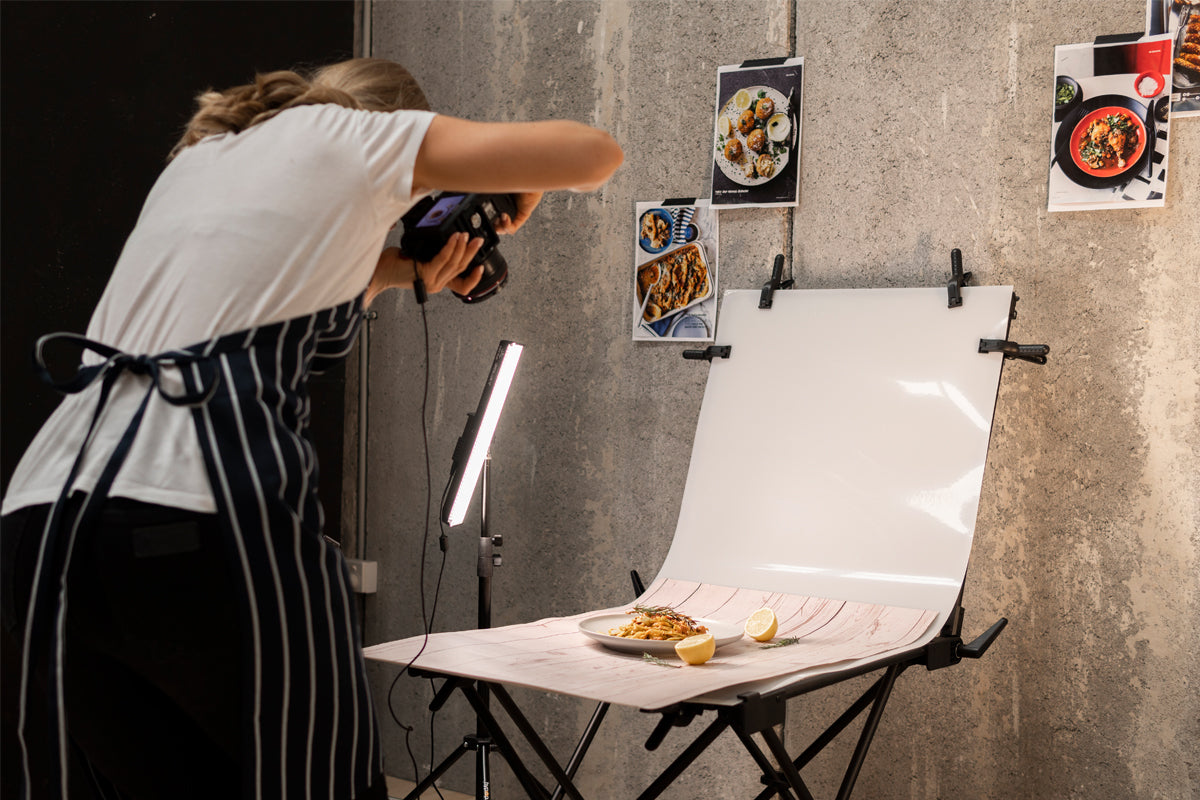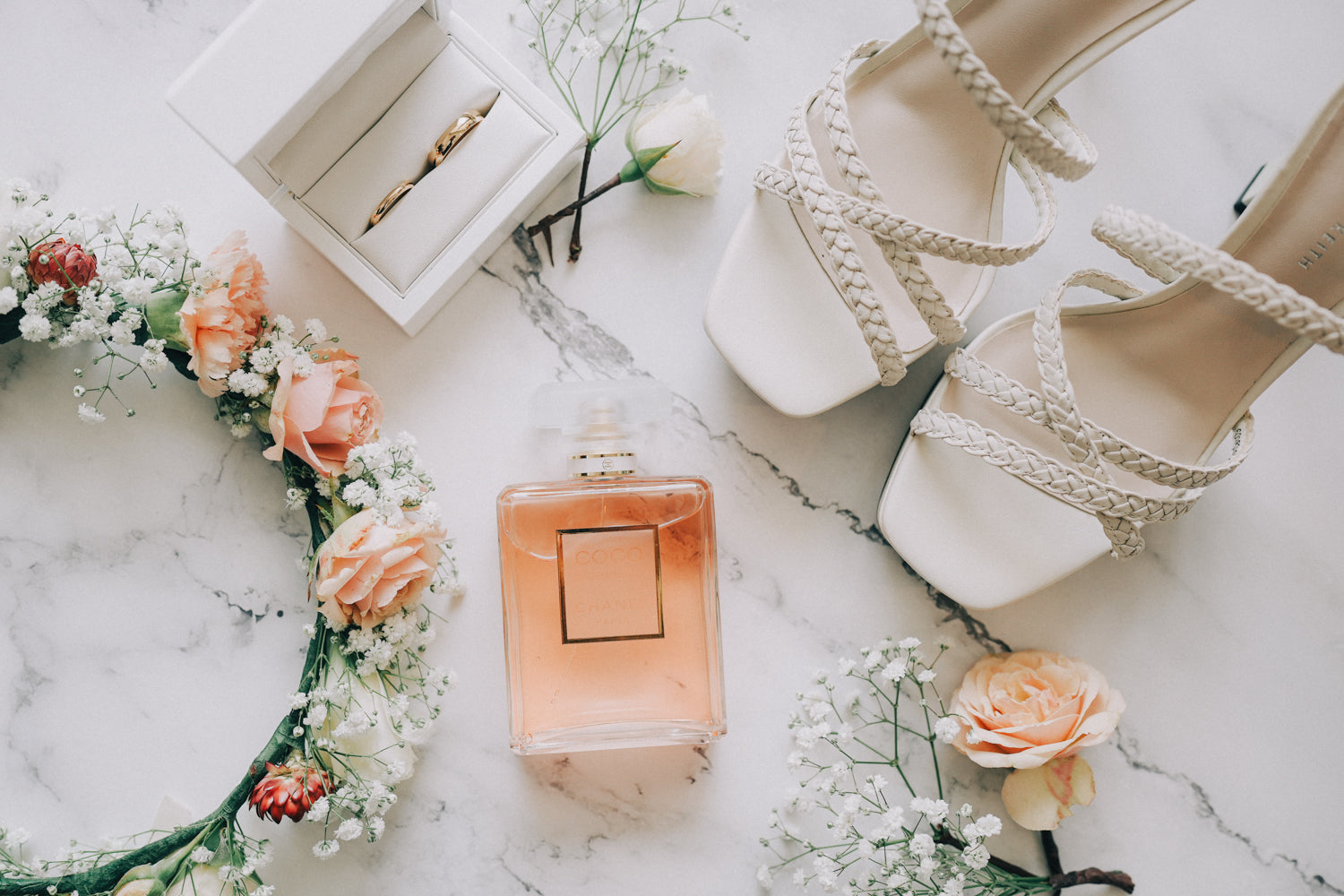Softboxes (or soft boxes) are one of the most popular lighting modifiers in photography and videography, but did you know you now have the choice of LED or fluorescent softbox lighting?
LED panels in softboxes create a flicker-free, continuous light source, while fluorescent continuous lights are the more traditional option. Both soft box lights are suitable for photo and video, but this article will help you decide which one is right for you.
What is a Softbox Light?

At the most basic, a soft box is generally a non-rigid box that fits over your light source. It has a soft, fabric diffusion panel at the front of the box, and the sides and top are generally made of some kind of reflective material. This means that the light comes out of the diffusion panel at the front, which is generally bigger than the light source.
Softboxes come in a range of shapes and sizes for different effects, and the larger they are, the softer and more diffused the light is.
Most professional photographers use softbox lighting because they are so versatile when it comes to providing soft light. You’ll find them used in fashion, portraiture, product, food, and video shoots.
Soft boxes don’t just take the role of main light - they can be used for fill light, background light, edge light - the possibilities are endless.
Why Use Softbox Lighting for Your Photos?

Soft box lights are so popular because of the diffused light they produce. One great use for them is to replicate the soft, cool daylight that you get from a north-facing window. North light has been favoured by portrait photographers from the invention of the camera onwards, and with a soft box you can produce that soft light anywhere and at any time you want!
These lights are also easy to put up and take down, as well as transport to different locations, which is handy for those on the go.
Soft boxes make great lighting choices for content creators, photographers, video bloggers, and YouTubers, as they provide easily-controllable, soft light for different photography and videography scenarios.
How to Use a Softbox

You should consider using a LED softbox set like the Spectrum ‘Kreator Kit’ Double Rectangle Dimmable LED Softbox Bi Coloured Lighting Kit, the LED Spectrum PRO 'S-Beam 150' LED Octagon Softbox Lighting Kit, or the fluorescent light Spectrum 'Illuminate Mate' Double Rectangle Softbox Continuous Lighting Kit as your lighting modifier any time you want soft instead of hard lighting. Soft lighting is when your light source is large, and closer than your subject, which gives lighter shadows and less harsh contrast.
Hard lighting, on the other hand, is typically when you have a smaller light source that is further away from your subject. This gives deep shadows and harder contrast between the light and dark areas.
The most flattering light for portraiture, fashion, video interviews, food, and products is soft light (unless you are trying to create a certain effect). Softbox lighting will give you that soft and flattering light, but you need to know where to place them for best effect.
Here are some basic and effective softbox lighting setups:
One Light Portrait Setup

This setup gives a good mix of light and flattering shadow on the side of the face away from the softbox. It’s a classic portrait setup, and the softbox is level with your subject’s face, or just slightly higher.
Two Softbox Shadowless Setup

This is another classic light setup for portraiture or video. The lights at either side are angled at 45 degrees to the subject, giving an even light across the whole face. Good for beauty shots where you need mostly shadowless lighting.
Key and Background Light Setup

This setup involves the main light at 45 degrees to the subject, with the second light angled towards a backdrop roll or cloth. The second light is at a lower power than the main light, and gives your subject a good separation from the background. This is often used in portraiture and video shoots.
One Light Food or Product Setup

Lighting your food or product shots from the side with a softbox is a good way to replicate window light. The softbox should be close to your subject, and level with the table or whatever you are using to stand the items on.
Difference Between LED and Fluorescent Softbox Lights

The main difference between the two is the type of light source used. Both are continuous softbox lights (as opposed to flash), but the Spectrum ‘Kreator Kit’ Double Rectangle Dimmable LED Softbox Bi Coloured Lighting Kit, and the Spectrum PRO 'S-Beam 150' LED Octagon Softbox Lighting Kit are both made with LED light panels that give off less heat than fluorescent lights. They also last a very long time, and are energy-efficient.
The Kreator Kit has an adjustable colour temperature that can be changed with the remote control. The ability to change the colour temperature of a light is very useful, as you can warm it up (think of candlelight) or cool it down (think of daylight) to suit various skin tones.
Fluorescent softboxes like the Spectrum 'Illuminate Mate' Double Rectangle Softbox Continuous Lighting Kit use fluorescent bulbs instead of LED panels. Fluorescent bulbs are cheap and efficient to run, but don’t tend to last as long as LED panels.
Which One is Right for You?
To decide which type of softbox lighting is right for you, you need to look at the type of photography or videography you do.
The Spectrum PRO 'S-Beam 150' LED Octagon Softbox Lighting Kit is a very powerful single light that comes with an octagon softbox, and is ideal for professional photoshoots that cover fashion, portrait, product, food etc. LED lights are also good for creating video.
The Spectrum ‘Kreator Kit’ Double Rectangle Dimmable LED Softbox Bi Coloured Lighting Kit comes with two lights and rectangular softboxes that can be used to create a variety of lighting setups. Again, they are great for a wide range of photography, and have the bonus of the adjustable colour temperature.

Last but not least is the Spectrum 'Illuminate Mate' Double Rectangle Softbox Continuous Lighting Kit . These soft boxes can also be used in photography, and are useful for lighting videos such as makeup tutorials or YouTube videos.
Conclusion

Here’s a couple of final tips to keep in mind when you’re lighting with softboxes:
- The larger the softbox, the softer the light.
- The nearer the softbox is to the subject the softer the shadows. When it’s further away they become harsher.
- Softboxes come in a range of shapes to determine how the light looks. You can get rectangular ones, long, narrow ones (strips) and eight-sided ones that are called octaboxes. You can also get fabric grids to go on your softbox to give a harder type of light.
We hope this rundown on LED vs. fluorescent softboxes has answered any questions you had, and given you an idea on how you can use softbox lighting to create many different looks for your photography or videography.
If you’re in the market for softbox lights, why not have a look at our whole range of soft box lighting options?
If you want to find out more about the benefits of using softboxes, then take a look at our blog post on the subject.




